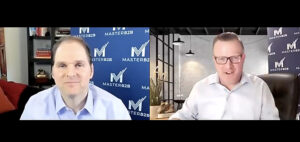Although three decades into the existence of e-commerce, distributors and manufacturers are still making some of the same mistakes they did in the early days — a hurdle in the effort to become even more digitally enabled.
How to improve? During a recent “un-webinar” from MasterB2B, panelists squared off on topics such as bringing in outside B2C talent to better enable B2B e-commerce platforms and whether e-commerce teams should report to the IT side of a distributor or to the CEO/C-suite business side.
The e-commerce showdown went down in three rounds between “team traditional” and “team unconventional.” Andy Hoar, CEO of Paradigm B2B, captained team traditional, which also included IBT CIO Paul Stubitsch and Apryl Erickson, vice president of commercial excellence at access system manufacturer HID Global.
Brian Beck, CEO of Beck Ecommerce, was at the helm of team unconventional, comprised of Tim Fabian Besser, the managing director for deineBAUSTOFFE, Spryker Systems CEO Alex Graf, and Katherine Bahamonde Monasebian, president and GM of North American Commerce at Stanley Black & Decker.
To set the stage for the debate, Beck cited a quote from Korn Ferry: “The greatest issues companies face don’t come from a lack of superior technology but from top-down structures, an inability to experiment, limited change management capabilities, a risk-averse culture and an inability to work across silos.”

Round 1: External vs internal hiring
The theme for the first round was whether distributors should source new talent for their e-commerce internally or externally.
“My real strong belief on this one is the more complex your business is — and I know many B2Bs to be very complex — the more sense I think it makes to grow your internal talent into an e-commerce role,” HID Global’s Erickson said. “Yes, you can always bring in consultants. Yes, you can bring in subject-matter expertise in a particular area, but no one knows the nuances like your internal employees do and your B2B employees.”
Taking the opposing view on team unconventional, Fabian Besser, whose company is a disrupter on Europe, said there were three major factors to consider for hiring; time, previous digital experience and putting “B2C knowledge into the B2B activity.”
Also see: “Who Will Win the Battle of Man vs. Machine in Distribution?”
“I think teaching even motivated people a skill within weeks or month — versus other smart people already have a years-long learning curve — just takes too long,” he said. “So, I think you need the B2C people with their experience to really help here.”
Team unconventional’s Bahamonde Monasebian noted there’s no one-size-fits-all for distributors but the try-before-you-buy approach for bringing in new talent would give distributors the flexibility to make sure would-be employees have the required skillsets for e-commerce.
Round 2: Should the e-commerce team report to IT or business side?
The argument that distributors need to decide where the e-commerce teams reports: the IT side of the house, or the business side that includes CEOs and C-Suite executives kicked off round two.
“Unless you want people rowing boats in different directions, I think you have to share resources,” Erickson said. “Be channeling your energy into helping augment your IT staff, and I think your friends in IT will thank you for that if you can help get some staff augmentation.
“Unless you want to be going in two different directions, I think the focus should be on working together, creating that alignment point versus creating a fiefdom.”
Fabian Besser’s counter arguments included that IT was more internally focused and not customer-focused, while digital is more forward thinking. “We strictly divided those teams into two,” he said. “For us, it was a really good experience because our product team now can really focus on what’s important on the market, what’s important for our customers?”
Bahamonde Monasebian agreed with Fabian Besser that customer-facing technologies were entirely different from backend IT systems, although there are similarities. In a software-as-a-service ecosystem, distributors are more focused on the delivery model and getting to the minimum viable product as quickly as possible. As a result, the digital leaders need to manage the technology directly and not through IT departments.
“When you’re incubating a business, it needs to report right to the CEO, right to the top,” Bahamonde Monasebian said. “It needs to show that it has a seat at the table, and it needs to have decision making, and financial and strategic accountability for results. Once it gets to critical mass in the business, you see that get more increasingly integrated into the core businesses, and the proficiency permeates throughout the company.”
IBT’s Stubitsch said his company has an oversight committee that includes the company’s CEO.
Round 3: Buy technology upfront vs. over time
The debate in round three centered on whether distributors should buy all of their e-commerce platforms up front or over a period of time to better prove the e-commerce business case.
“We don’t want to buy what we don’t need to buy,” Erickson said. “We want to spend thoughtfully, but what I would say is we’d love to be agile. We’d love to be nimble, but e-commerce in B2B isn’t a dating app. I think you have to have the critical mass up front of the whole ordering process, and then thereafter you can be agile and nimble and update as you go.”
From the team unconventional side, Fabian Besser said that while e-commerce platforms need to have basic systems in place, they also require more open systems that include APIs.
“I would even say e-commerce has a lot to do with the dating app, to be honest, because actually what you what you need to have for e-commerce is lots of flexibility nowadays,” he said.
Scorecard
During the un-webinar, Beck and Hoer polled the attendees to get their thoughts on the areas of debate for team traditional and team unconventional.
The Round 1 question: Is it better to hire internally or externally for new e-commerce rolls in B2B companies? Externally: 66%, Internally: 34%.
The Round 2 question: Is it better to have e-commerce team report through the business side of the house or the IT side of the house? IT: 8%, Business; 92%.
The Round 3 question: Should companies buy more permanent or temporary technology solutions to prove the B2B e-commerce business case? Permanent: 48%, Temporary: 52%
The verdict
While Beck’s team prevailed in the first two poll questions, Hoar countered that both of those questions blended into the third.
“If you think about it, in the hiring the processes there is a temporary version and more permanent version,” Hoar said. “The permanent version is more internal, more B2B-centric, more IT or conventional.
“The temporary version is more like bringing B2C people in. Having things be a temporary condition because you’re not going to have an e-commerce headquarters located off site permanently. It might be for months or years, but it’s not going to be for decades. I’m going to say it’s pretty much a tie.”
Beck’s final thoughts included: “We’ve got to stop endlessly doing business cases. You’ve got to give enough leeway to the e-commerce team to get started.”
MDM is the media partner for MasterB2B’s Un-Webinar series. Click here to listen to this webcast in its entirety and click here to register for the series. The next event is Tuesday, May 25, at 2 p.m. EDT.
Related Posts
-
Three of MDM’s five most-read blogs published last month focused on e-commerce and digital, while…
-
Building materials distributor SRS said it has named Ryan Nelson to the company’s top financial…
-
As platform strategy 101 tells us: the technology is a commodity. The power is in…





